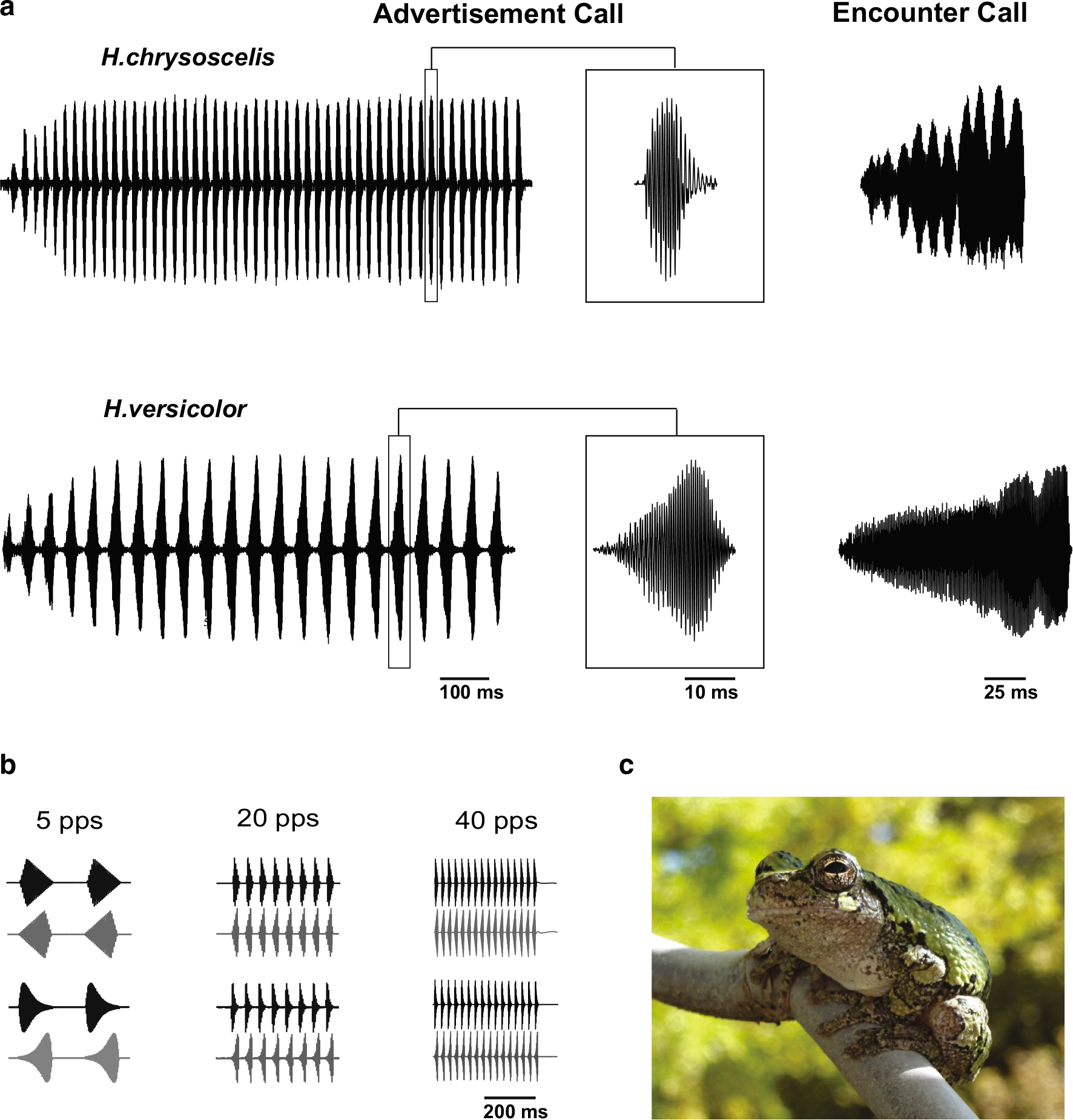Fig. 1.

a Oscillograms of advertisement (left) and encounter (right) calls of the gray treefrog species Hyla chrysoscelis and H. versicolor and b stimuli used to investigate pulse rate and rise-time selectivity. Pulses in the advertisement calls of H. chrysoscelis and H. versicolor are repeated at rates of approximately 40–50 pulses/s and 20 pulses/s, respectively, at 20 °C. The individual pulses have fast-rise (H. chrysoscelis) or slow-rise (H. versicolor) shape. Pulses in stimuli had either linear or exponential rise–fall characteristics. c Picture of a gray treefrog; the two species of gray treefrogs are morphologically indistinguishable
